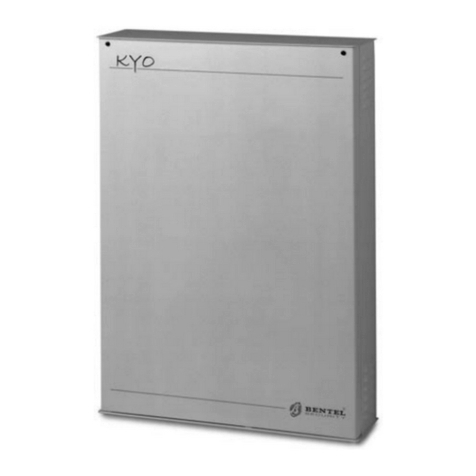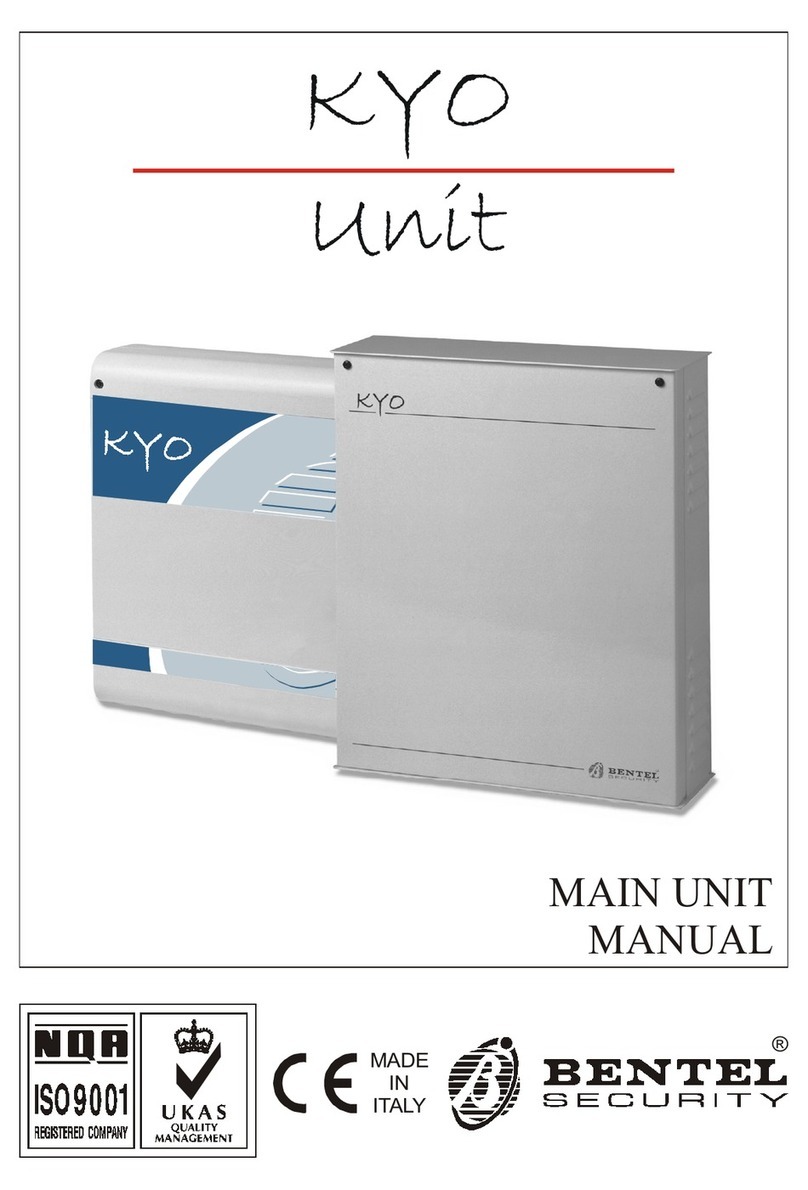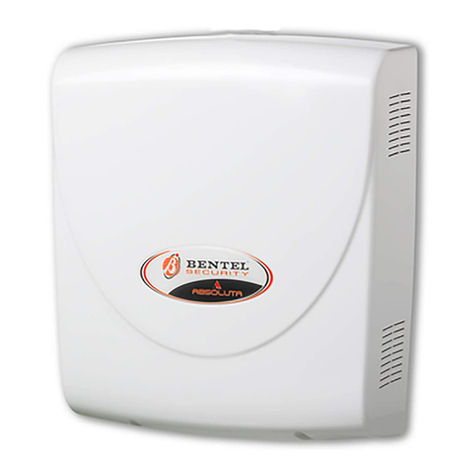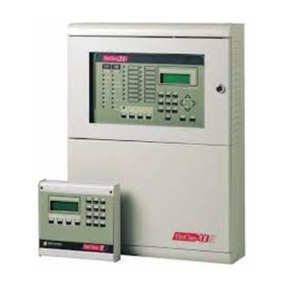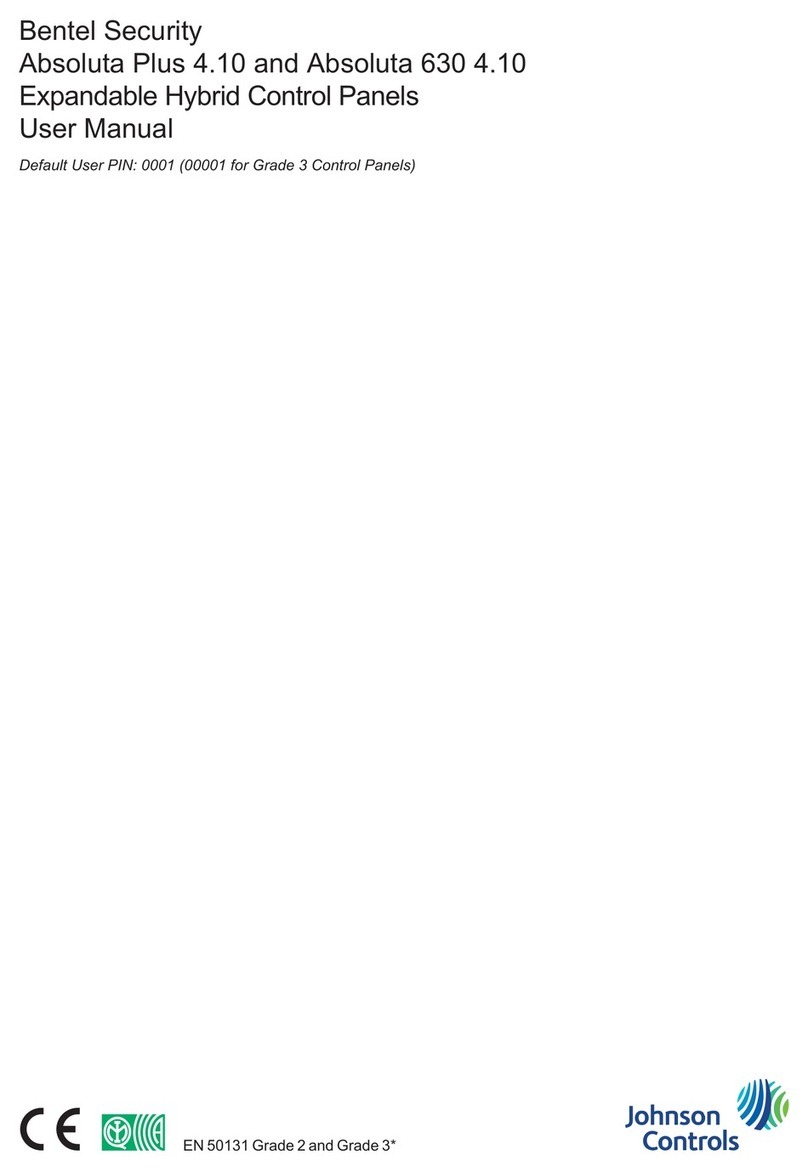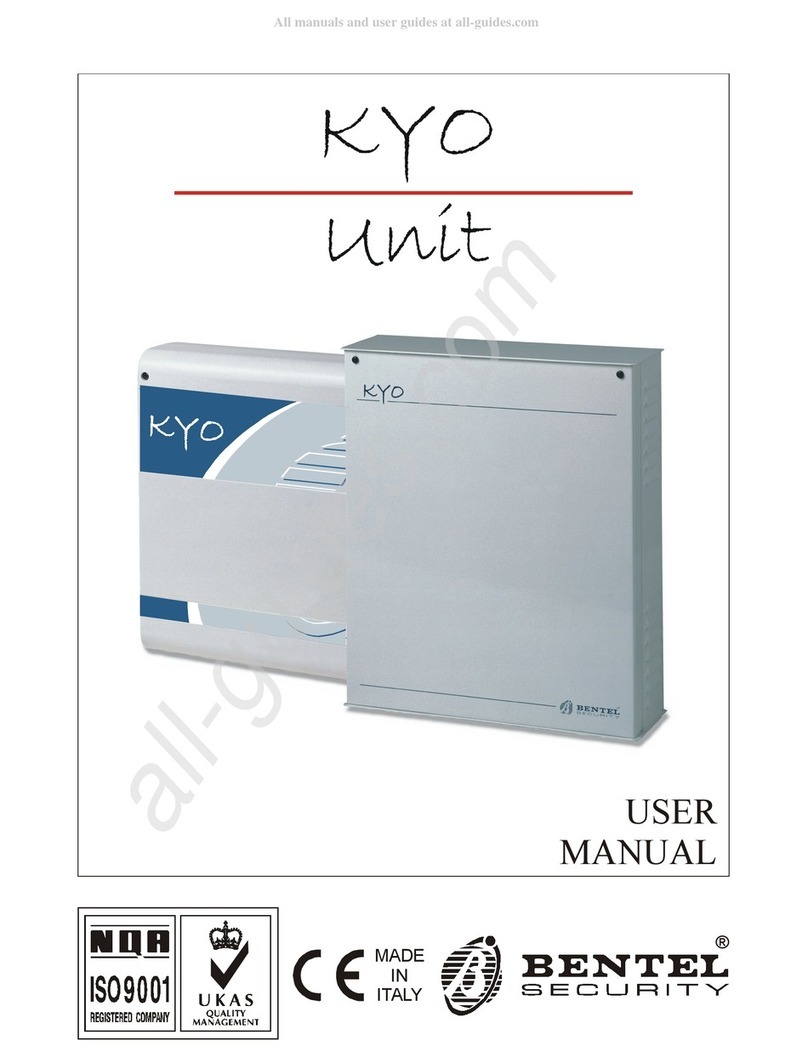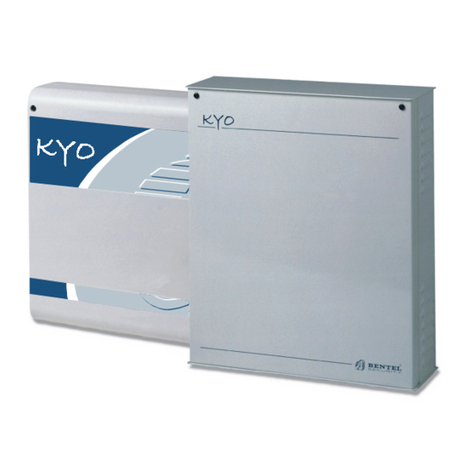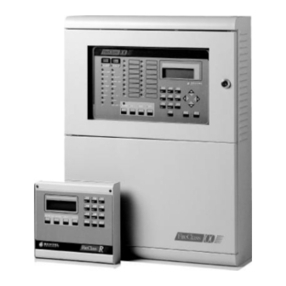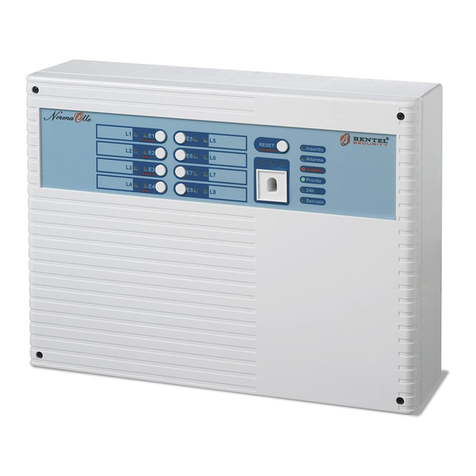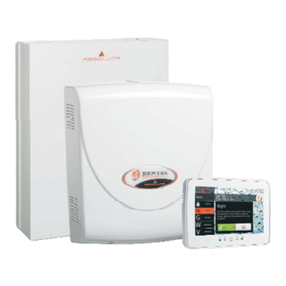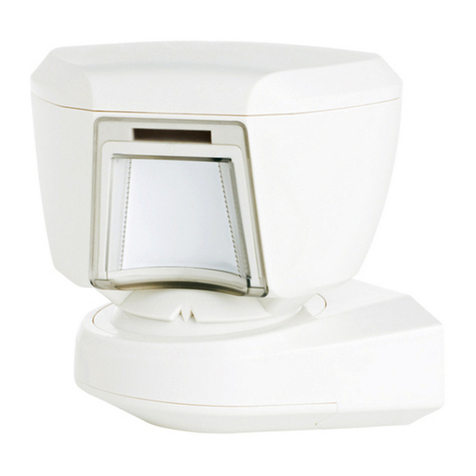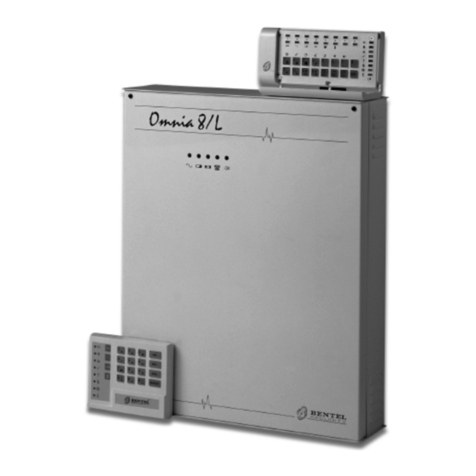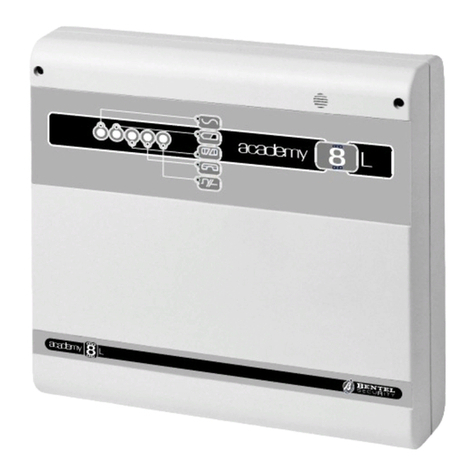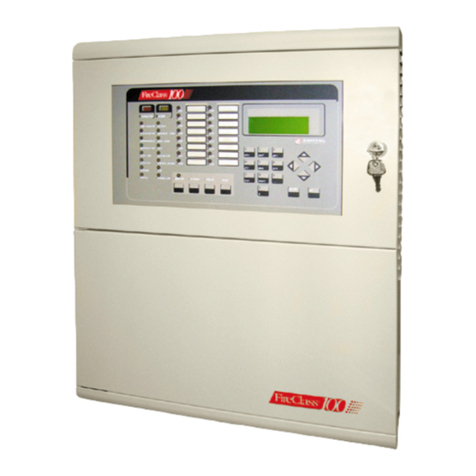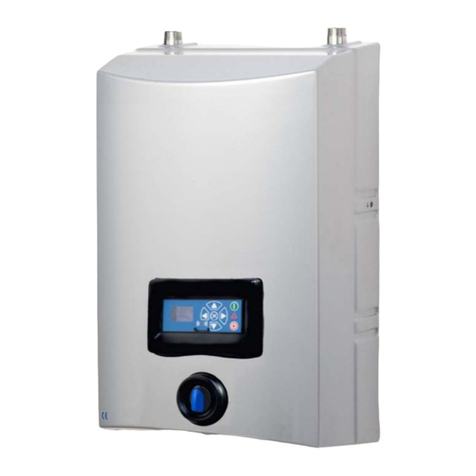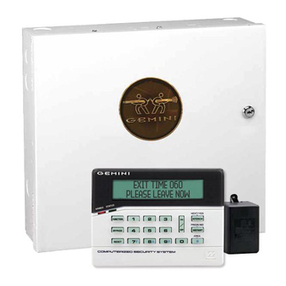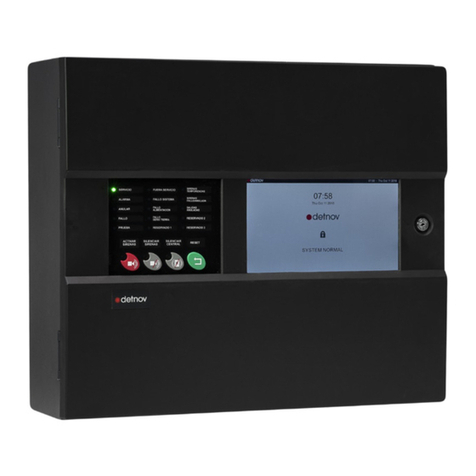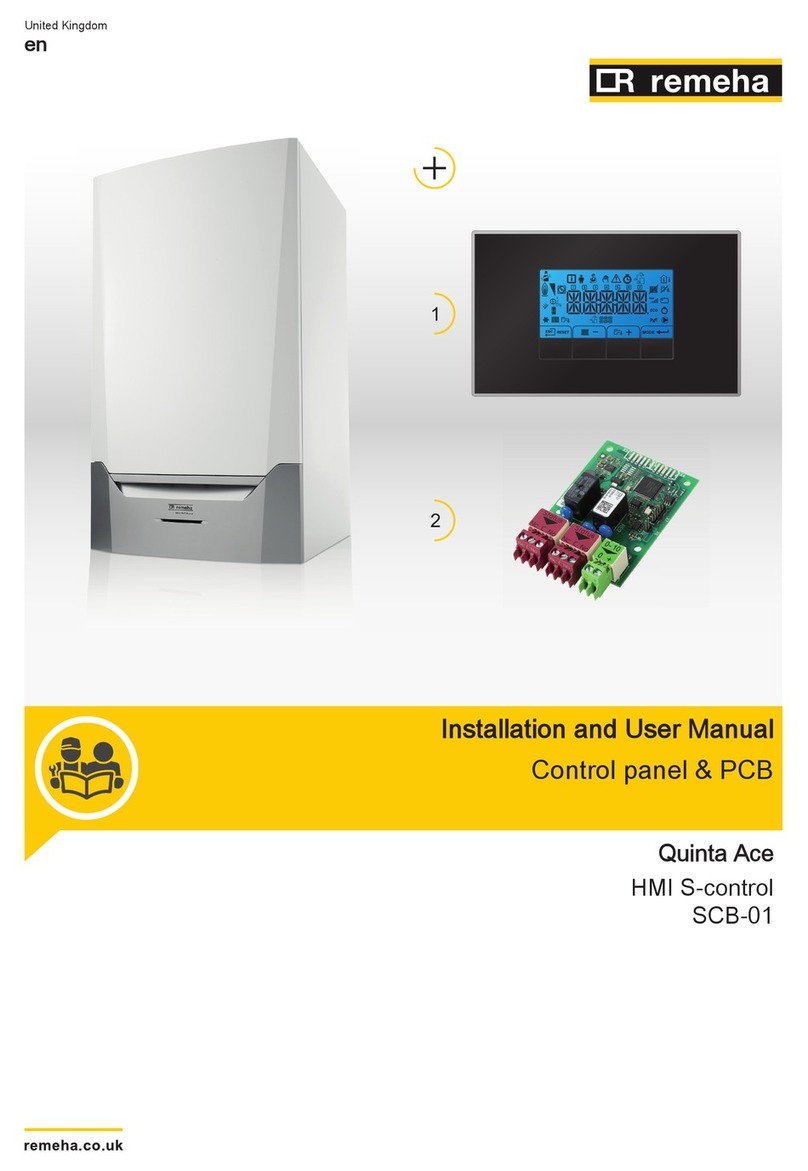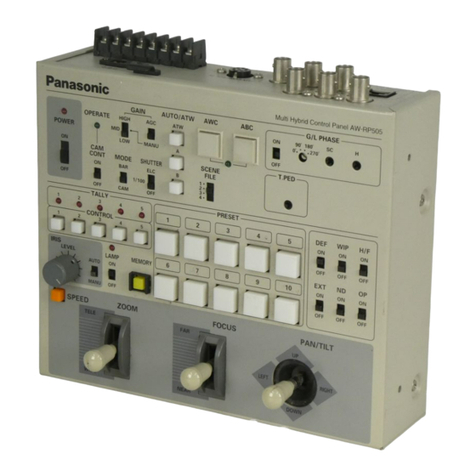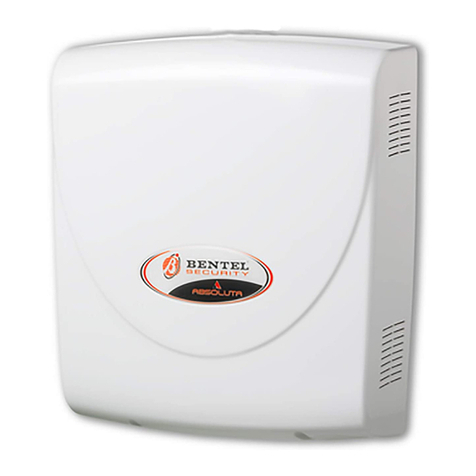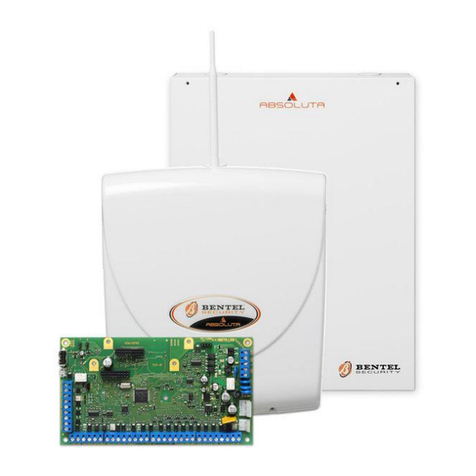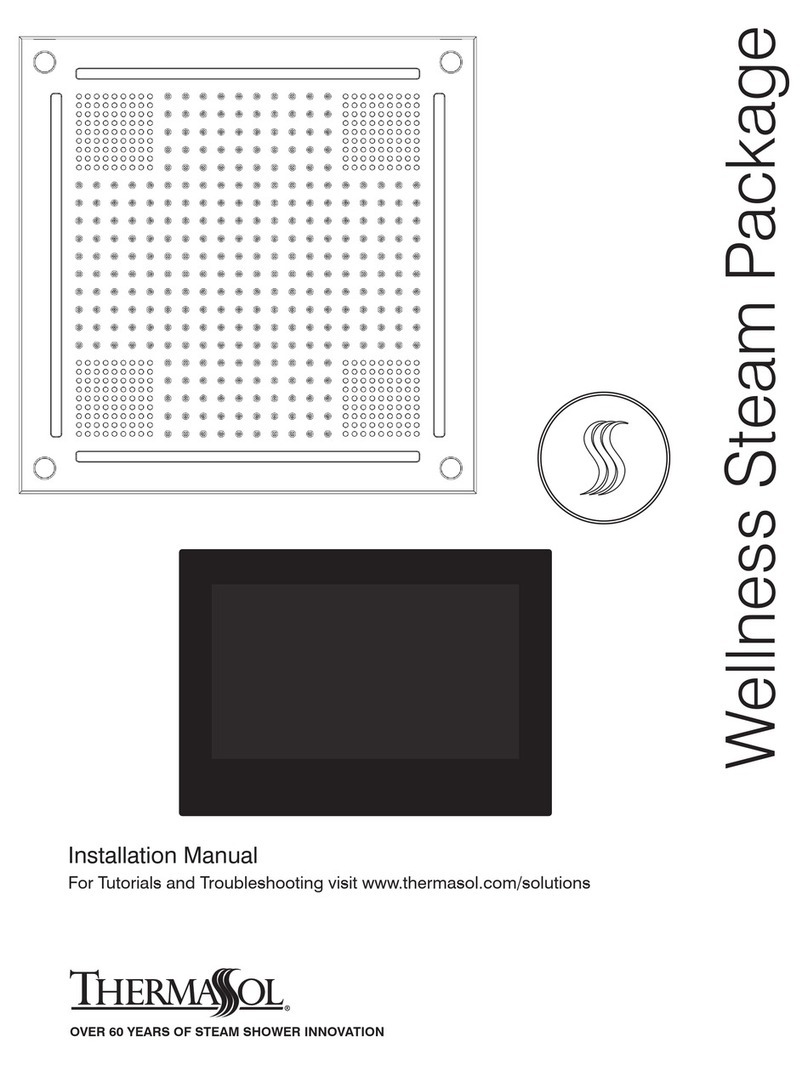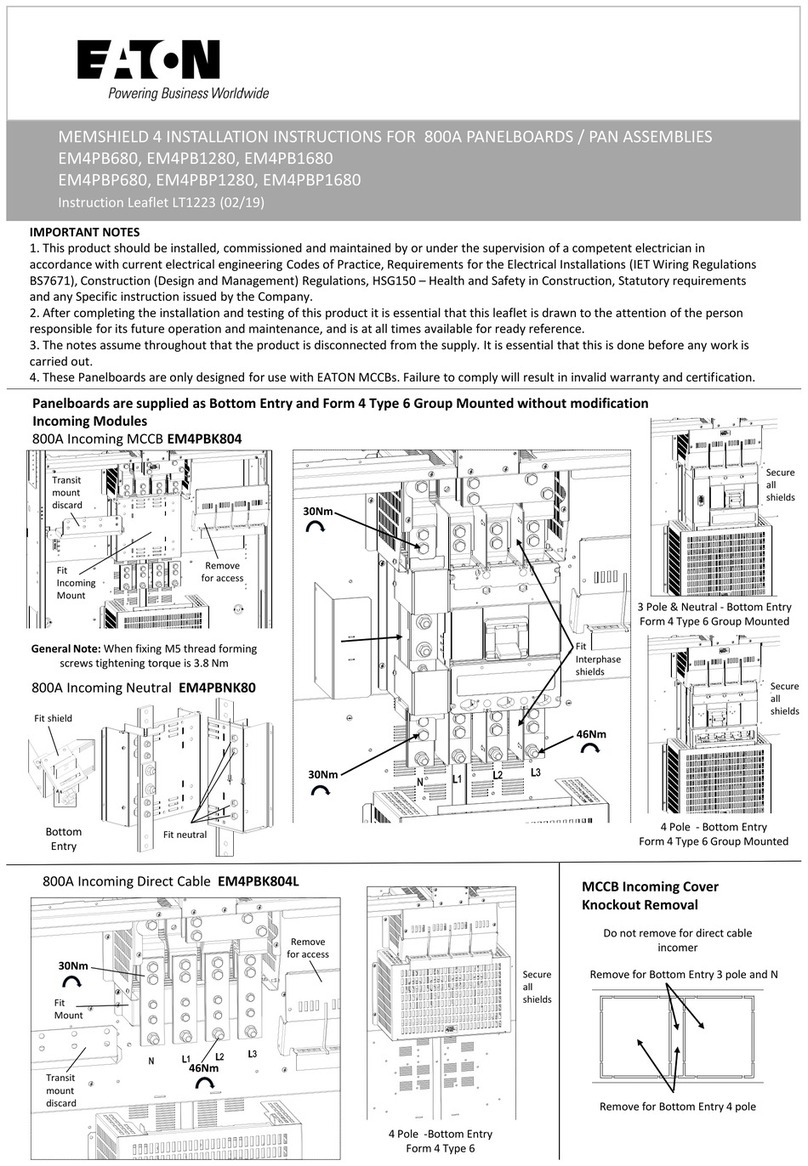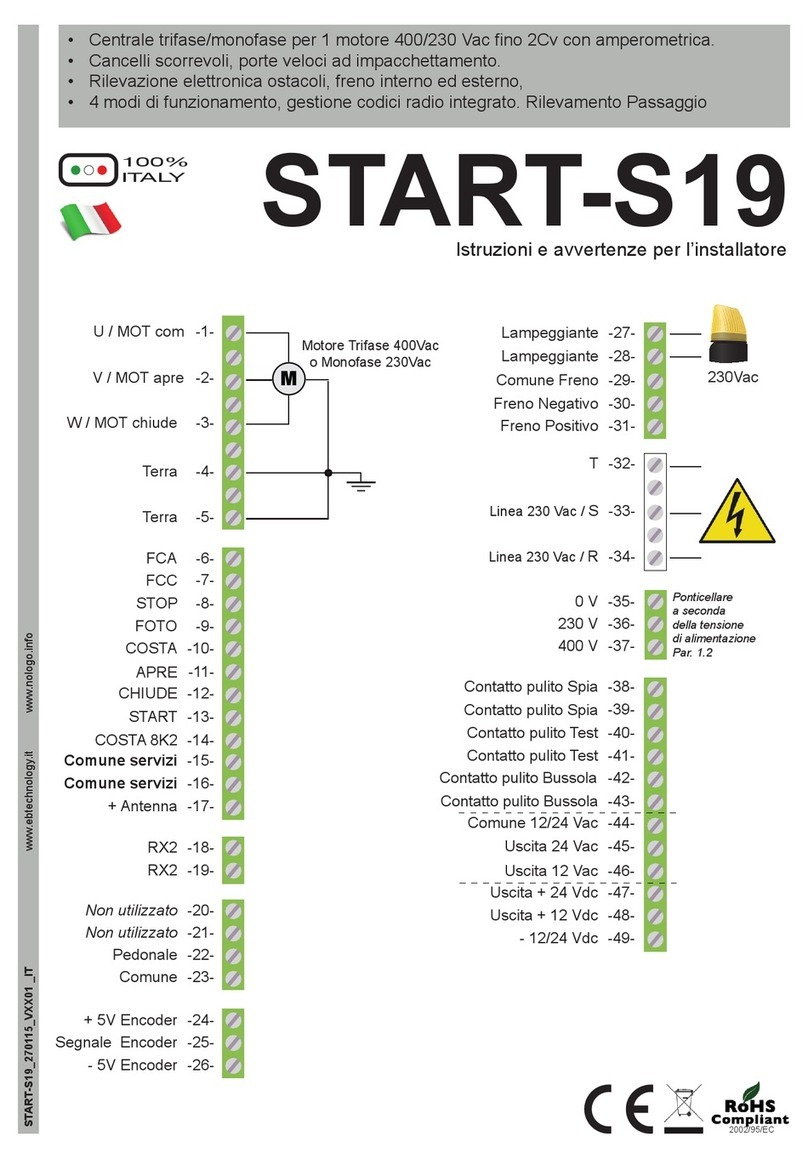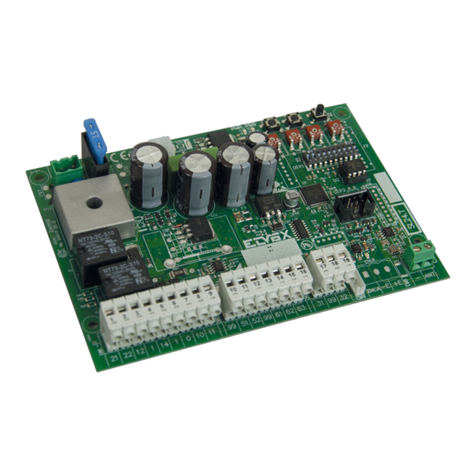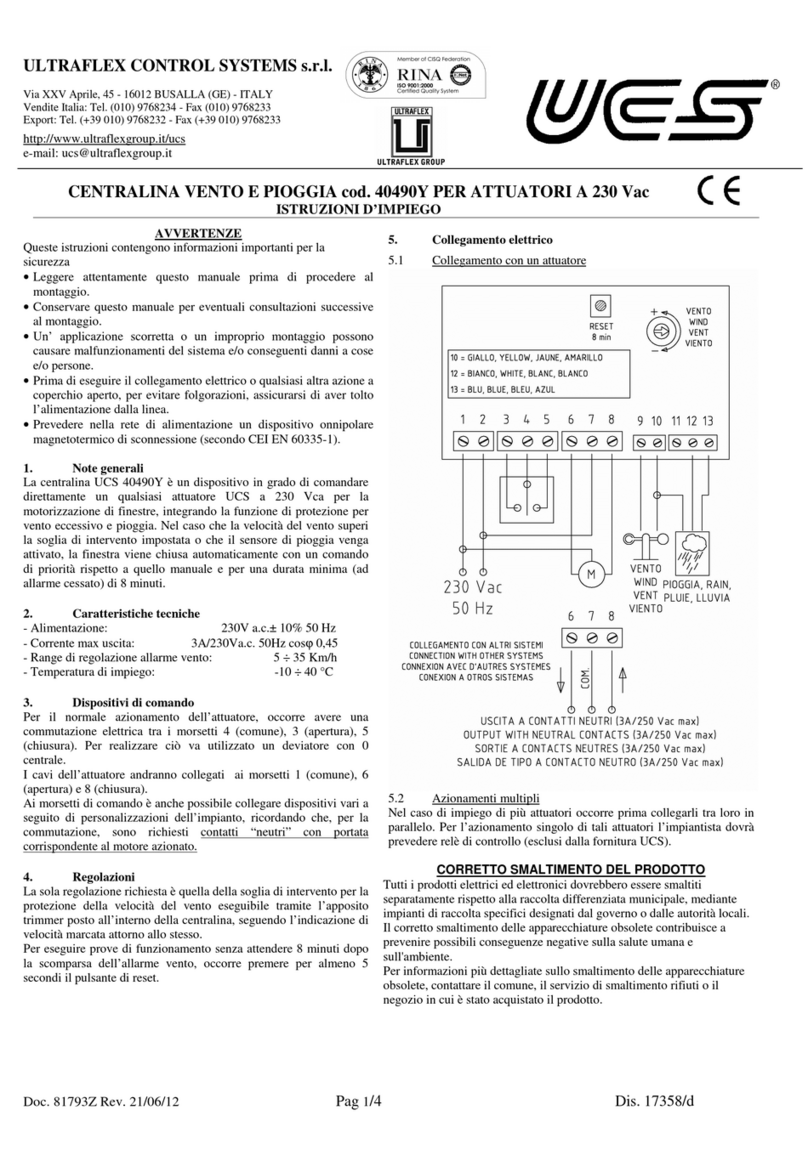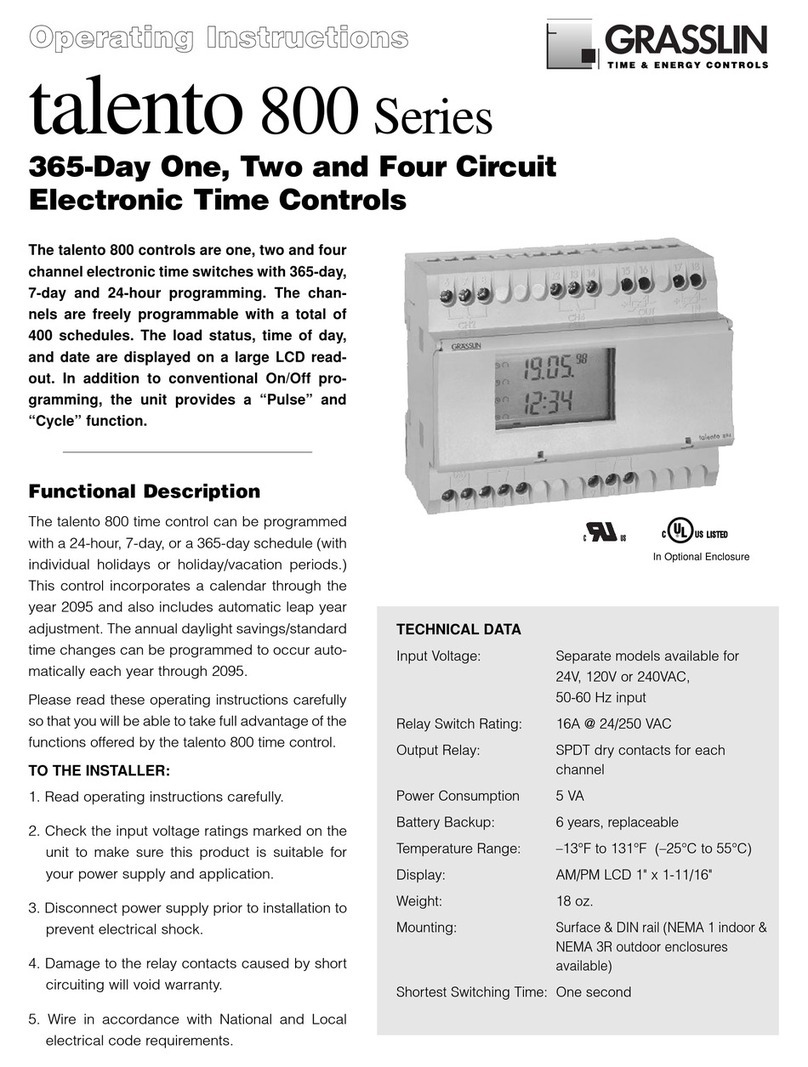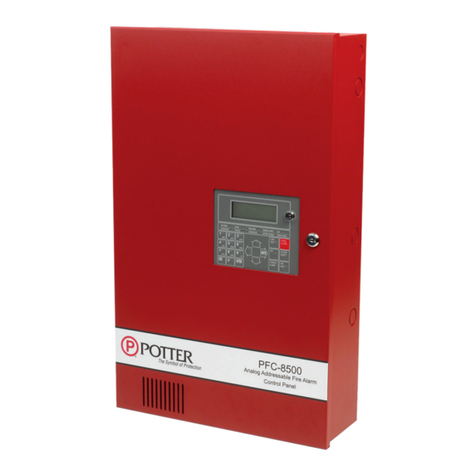
ØDHCP – Select this option if you wish to use a dynamic address for the IP Module
you are programming.
ØManual settings – Select this option if you wish to assign a static IP address to
the IP Module you are programming, then set the following parameters:
- IP address: enter the IP address to be assigned to the IP Module; the network ad-
ministrator will provide you with this information. The default setting is
192.168.0.101.
- Subnet mask: this must be the same as the subnet maskfor the local network; only
one subnet mask is valid for each local network. All nodes on the same subnet will
use the same subnet mask; the network administrator will provide you with this infor-
mation. The default setting is 255.255.0.0.
- Gateway IP address: enter the IP address of the local gateway which may be used
by the IP Module to connect to a PC outside the LAN (WAN). The default setting is
0.0.0.0.
General options This section is used to select the general options for the IP Module.
ØEncryption key – If it has been programmed, the IP Module will use this key to
encode and decode the packets exchanged with the PC. The encryption key may
include between 1 and 32 hexadecimal characters. To disable encryption, enter
0 (zero). If the encryption key does not correspond to that of the IP Module, com-
munication between the PC and the IP Module will NOT be permitted.
The default setting is 0 (encryption key not enabled).
ØIP Module port – This is the port which should be used to communicate with the
IP Module. The default setting is 3064.
ØControl unit port – This is the port which should be used to communicate with
the control unit. The default setting is 3062.
ØIP Module code – This code should be applied when the FireClass 500 Console
is used to program the IP Module, either remotely or locally. The code should
consist of 4 hexadecimal digits. The default setting is 5555.
ØTimeout due to connection with no traffic – Enter the maximum time period
during which no data is transmitted before the connection is terminated.
The default setting is 20 seconds.
Events mask This section can be used to enable/disable signals from the OC out-
put and the indicator light L(8), for certain events recognised by the IP Module: LAN
not detected, Remote IP Module programming, Local IP Module programming
(see paragraph “Description of the indicator lights” for a description of these events).
A tick indicates that the corresponding event will be signalled! The LAN not detected
event indication is enabled by default.
Read-only options The values in this section cannot be modified. They display in-
formation relating to the connected IP Module.
ØMAC Address – Displays the MAC address of the IP Module: the MAC address is a
unique identification number assigned to every IP device throughout the world.
ØSoftware version – Displays the version of the program running on the IP Module.
ØBoot version – Displays the boot version.
ØCurrent IP address – Displays the IP address assigned to the IP Module.
Ethernet speed This section is used to set the parameters corresponding to the
Ethernet interface of the IP Module: the Auto setting is selected by default.
ØAuto – If this option is enabled, the IP Module will take the speed and duplex va-
lues from the network. If this option is disabled, the speed and duplex values
must be set as described below.
ØSpeed – If the Auto option is disabled, set the speed value as appropriate: 10
Mbps or 100 Mbps.
ØDuplex – If the Auto option is disabled, set the Data exchange (Duplex) mode as
appropriate: Half or Full.
Output polarity This section is used to set the operating mode of the OC output
on the IP Module.
ØOpen on breakdown – The outlet is suspended when a breakdown occurs (de-
fault setting).
ØClose on breakdown – The output is connected to the earthing system when a
breakdown occurs.
nInitial programming
To program the IP Module for the first time, a LAN consisting of the IP Module and
the PC must be created and an IP address set for the latter, such as the default IP
Module value (192.168.0.101). Proceed as follows:
1. Disconnect the network cable from the PC., if present.
2. Connect the IP Module to the PC using a network cable.
3. Change the IP address of the PC to 192.168.0.XXX (see below).
4. Start the FireClass 500 Console application.
5. Set the IP address of the IP Module to an address which is valid forthe network to which
it will be connected.
6. Select the button (Send to IP Module): make sure that the IP Module code
is 5555.
7. Restore the original IP address of the PC (see below).
8. Reinstall the original wiring and connect the FC500IP to the established network.
Changing the IP address of the PC For Windows 98 or later versions, proceed
as follows:
1. Open the network connection properties window.
2. Select the Internet Protocol (TCP/IP) tab.
3. Select the Properties button: The Properties – Internet Protocol (TCP/IP) win-
dow will be opened.
4. Enable the option “Use this IP address”.
5. Enter the value 192.168.0.XXX in the IP address box (with XXX other than 101).
Once the IP Module programming is complete, restore the IP address of the PC
using the same procedure.
nRestore default settings
The default settings may be restored as described below.
+When the default settings are restored, it will NO LONGER be possible to communi-
cate with the IP Module and the control unit via the LAN; communication will only be
possible using the procedure described in the paragraph “Initial programming
Via software Select the button (Default settings) on the IP Module screen.
Via hardware Proceed as follows:
1. Disconnect the IP Module fromthe power supply: disconnect terminal [+V] on ter-
minal block 1.
2. Disconnect the PC-Link cable (11) from connector 2.
3. Short-circuit the first two terminals on connector 2, marked with the symbol
.
4. Restore the IP Module power supply (reconnect the [+V] terminal on terminal
block 1) while keeping the terminals on connector 2short-circuited, until the S
indicator light (4) begins to flash.
5. Reconnect the PC-Link cable (11) to connector 2.
View IP address
The IP address assigned to the IP Module may be viewed on the control unit display.
To do so, proceed as follows:
1. Press F2 (Analyze)
2. Press button 6(Communic.): the firmware version (FW ver) and IP address
(ADDR) of the IP Module will appear on the display (watch the line marked with Ion
the display).
Technical features
Power supply 13,8 ÷ 27,6 V_
Max. absorption 250 mA
Resting absorption 50 mA
Operating temperature -5 ÷ +40 °C
Dimensions L*H) 93*65 mm
4Modulo FC500IP
Recycling warning
BENTEL SECURITY advises its clients to dispose of used devices (control
panels, detectors, sirens, electronic accessories, etc.) with full respect
towards the environment. Methods which could be used includethe re-use of
parts or of whole products and the recycling of products, components and/or
materials. For further information visit:
www.bentelsecurity.com/it/ambiente.htm
Waste Electrical and Electronic Equipment Directive (RAEE – WEEE)
Within the European Union, this label indicates that this product
should NOT be disposed of along with domestic refuse. It should be placed
in a suitable bin from where it would be possible to perform recovery and
recycling operations. For further information visit:
www.bentelsecurity.com/it/ambiente.htm





